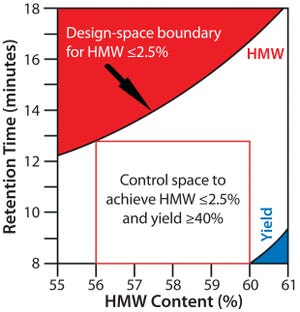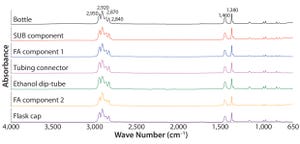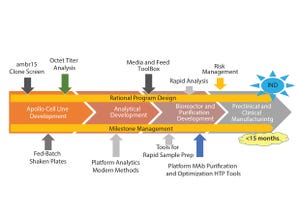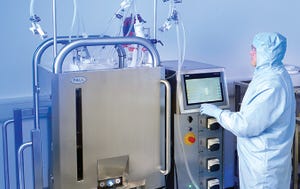September 2016
Some issues of BPI more than others emphasize to me the interdisciplinary nature of our audience. One example: I am happy to bring you the latest consensus paper from the CMC Forum series. In its discussion of host-cell protein control strategies, the authors write of their goal to “bring industry, academics, and regulators together for generating integrated perspectives on HCPs and their control.” Those three groups — industry, academics, and regulators (government) — constitute three major categories of our readership statement. So to meet their professional needs, we know that BPI’s subject matter has to span a range of topics from regulatory to business to science and technology.
From the start, BPI has separated its content into two primary categories — nontechnical (“Focus on . . .”) and technical articles — with a third smaller category to highlight presentations of supplier data. I think it is because we try generally to balance the number of pages devoted to technical and nontechnical articles th...
Women In Bio Launches Executive-Level Certification Program
To prepare women in life sciences for roles on boards of directors, the national Women in Bio (WIB) organization has launched a program for executive-level board certification. “Women are significantly underrepresented on the boards of life science companies,” says Kristi Sarno, national president of the group, “and the Boardroom Ready program will ensure that more women are qualified, willing, and proactively seeking board memberships. This new initiative is an important step toward promoting women leadership in our industry, and we are pleased to be an integral part of positioning them to assume key roles.”
An organization of professionals committed to promoting careers, leadership, and entrepreneurship of women in the life sciences, WIB announced this new program in May. It will provide them with a full understanding of the duties, responsibilities, and commitments of serving on both public and private company boards. Graduates will have acce...
Introduction
Accelerate activity. Improve predictability. Drive higher process efficiency. Increase quality. Lower cost of goods sold (CoGS). Secure supply. In an era where the biomanufacturing wheels turn faster by the day, where the stakes are higher and the choices seemingly endless, it is easy to become overwhelmed. How can you make good biomanufacturing decisions and develop robust long-term strategies when the environment is constantly changing? Whether a political shift affects your product or market, a natural disaster disrupts your supply chain, or some other external influence suddenly alters your plan, you have needs that must be met and people counting on you to deliver product. In such situations, extensive bioprocessing knowledge and experience are invaluable tools that will make a difference. Good insights about technical advancements, process economy implications, and sustainability aspects can help improve your individual decisions and increase the likelihood of success.
Recently, four re...
Figure 1: Biosolve Process cost of goods (CoG) and net present value (NPV) model configuration
Historically, in generating material for clinical testing during antibody process development, emphasis was placed on efficacy, product quality, regulatory compliance, and speed. As the biopharmaceutical industry has matured (and with increasing competition), emphasis has shifted toward cost optimization and manufacturability. Reducing the costs of medicines for patients and payers (thereby broadening access to drugs) is now a key driver during development of new therapies as well as modernizing processes for existing molecules. Cost reduction includes providing robust manufacturing processes that can be agile, transferable to multiple production locations around the world, and sufficiently flexible to accept next-generation technologies and processes while ensuring product quality without retrofitting.
Cost pressures are not only related to manufacturing, but also to clinical risk and attrition rates for therap...
Figure 1: A design space plot as determined by Jiang et al. for a hydrophobic-interaction chromatography (HIC) step used to purify an Fc fusion protein (
4
). This example shows the acceptable design space for protein loading and HIC resin hydrophobicity (defined in minutes of lysozyme retention time) related to high–molecular-weight content (a CQA for the product) and step yield (an important process performance attribute)
Process design space and control strategy are two fundamental elements of quality by design (QbD) that must be established as part of biopharmaceutical development and regulatory filings. Like all of QbD, they are interconnected and iterative. Both are based on knowledge gained during product and process development — but both need to be in place (in a potentially very limited form) when a company begins to manufacture drug substance for clinical trials.
Part 1 of this discussion appears on pages 28–35 of BPI’s June 2016 issue. It provides an overview of QbD for establishing the founda...
Figure 1: Absorbance Fourier-transform infrared (FT-IR) spectra of different test articles made of polypropylene
The presence of visible foreign particulate matter is considered a critical defect in parenteral products and one of the main reasons they can be recalled (
1
). Foreign particles present during any stage of manufacturing are considered to be contaminants and can impose a risk to the control of the manufacturing processes (
2
). For those reasons, particle contamination arising in any manufacturing step initiates a nonconformance or out-of-specification observation. That requires an investigation to identify root cause so as to mitigate the risk of repetition.
Investigations begin with particle identification. Appropriate analytical technologies must be used to determine particle composition. Elemental and chemical composition analyses and physical appearance characterization are commonly referenced methods (
3
). Whereas particle identification is a critical step in such investigations, findin...
JUPITER IMAGES (WWW.THINKSTOCKPHOTOS.COM)
State-of-the-art analytics guide process development by providing companies with thorough understanding, effective removal, suitable control, and comparability assessment after process changes of host cell proteins (HCPs) in recombinant biotechnology products. An array of analytical techniques and approaches can be used to establish control strategies for host cell proteins. Techniques used for HCP characterization and comparability include two-dimensional (2D) gel electrophoresis with a range of stains, 2D immunoblotting, 2D high-performance liquid chromatography (HPLC), 2D difference gel electrophoresis (DIGE), and increasingly mass spectrometry (MS) in different formats. For quality control testing of HCPs, immunoassays remain the most commonly used techniques.
The inherent complexity in analyzing a mixture made up of hundreds of HCPs with significantly different molecular characteristics at varying levels of abundance is a significant challenge to any method’s...
Figure 1: Tools for speed to clinic
With increasing industry emphasis on providing both rapid and robust processes, companies are reaping the benefits of new tools for risk management and process analytical controls. As a current example of these approaches, Fujifilm Diosynth scientists have accelerated the development process from gene to finish by shortening the timeline, incorporating quality by design (QbD) principles, and designing the process to be as robust as possible.
When the Apollo mammalian expression cell line was introduced three years ago, the time from gene to investigational new drug application (IND) took 18–24 months. Through new tools, approaches, and innovations, the company has shortened that time to 15 months or less using rational program design (Figure 1).
The first step was to make cell line development robust and create tools for more efficient upstream and downstream processes. Analytics play an important role and have been designed alongside the processes to enable quick and r...
Photo 1: Pall Allegro STR 200 bioreactor
The increasing role and importance of cell culture in biophamaceutical manufacturing has led to considerable research and development (R&D) into bioreactor design and performance in recent years. As a result, a greater understanding of bioreactor fluid dynamics and critical physical parameters is now essential to maximize cell growth and productivity. Stirred-tank bioreactors are especially important in this development process because of their favorable properties in areas such as mixing efficiency and homogeneity, energy transfer, and scalability.
The design and manufacture of single-use bioreactors is another major area of R&D. The objectives have been to achieve and (when possible) improve fluid dynamics and cell culture performance of stainless steel systems but in a single-use, presterilized format. This alternative technology also offers product developers an opportunity to create and manufacture innovative designs not achievable with multiuse cleanable syst...
Like many other industries, biotechnology is being transformed by the emergence of
big data
— extremely large data sets that can be analyzed to reveal patterns, trends, and associations — and advanced analytics. Information from multiple sources such as electronic health records, payer claims, and mobile health platforms is growing exponentially. When used and harnessed properly, these data can boost the efficiency of drug research and development (R&D) in three critical areas: early R&D investment, drug development, and personalized medicine.
Boosting Efficiencies
First, big data can help companies understand the research landscape and make smart,
early stage investments
. Increasingly, research activity is sourced externally from other companies and academic institutions. Consequently, accurate identification of external research of interest gives a company a competitive advantage in R&D and partnering. Tools such as data mining and automated learning/searches can allow companies to pinpoint importan...














